Cats are sensitive to many toxic agents, sometimes in ways unique to
their species. Although cats are less likely than dogs to expose
themselves through "curious" ingestions, cats do have more of a tendency
to nibble on deadly agents. Cats are also able to jump to high places
and squeeze into small spaces that are out of reach to dogs, children
and even adults! Lastly, because of their need to groom, cats with skin
exposure to hazardous chemicals are likely to receive an oral dose as
well. In this article we describe 10 common household hazards that are
dangerous to cats. The products listed below have been selected based on
the most frequent feline exposures reported to the ASPCA Animal Poison
Control Center (APCC) over the last four years.
1-2. Canine topical treatments and other topical insecticides
Believe it or not, owners often accidentally apply dog flea and tick
treatments on their cats. In some cases, cats have even developed signs
of poisoning after being in close contact (sleeping near or grooming)
with a dog that has recently been treated with a flea/tick topical
medication. Initial signs of intoxication may appear within a few hours
but can take 24 to 72 hour to show up. Full body tremors are the most
common, though seizures may also occur.
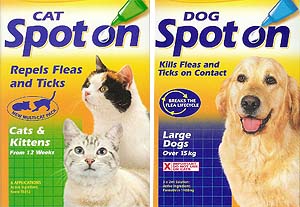
Cats may also have an adverse reaction to topical insecticides
specifically designed for cats. In general, topical flea control
products applied according to the label directions do not cause
problems. If signs such as irritation of the skin or hypersensitivity
appear, wash the product off with a mild detergent. If a cat licks the
applied product, hyper-salivation, agitation and occasionally vomiting,
may develop. The best way to avoid any problems is to read the
directions carefully and thoroughly before applying any topical
medication or product on your cat.
3. Venlafazine
Venlafaxine (Effexor, Effexor XR-Wyeth) is an antidepressant
available in tablets and capsules. Cats seem to be big fans of
venlafazine and readily eat capsules containing the drug Although this
is not a common household drug it can cause serious illness if ingested.
Clinical signs include dilated pupils, vomiting, tachypnea (rapid
breathing), tachycardia (rapid heart rate), ataxia, and agitation. Signs
generally begin within one to eight hours after ingesting the
medication. The prognosis is good with timely treatment and close
monitoring.
4. Glow sticks and jewelry
Glow sticks and jewelry are plastic bracelets, necklaces, and wands
that contain a liquid that glows in the dark. The jewelry is popular
throughout the summer, especially around the Fourth of July and at
Halloween. Cats frequently bite into the jewelry, but due to the
extremely unpleasant taste of the liquid chemical, they generally don't
ingest more than a small amount. Almost immediately after biting into a
piece of glow jewelry, a cat exhibits signs of a taste reaction,
including hyper salivation, agitation, and, occasionally, vomiting. The
behavioral changes are likely due to the cat's reacting to the
unpleasant taste. A tasty treat such as milk, liquid from a tuna fish
can, or other palatable food can ameliorate the taste reaction. Remove
any liquid on the fur with a wet washcloth to prevent re-exposure. Since
the liquid is designed to glow in the dark, it is easiest to identify
the chemical on the cat in a darkened room.
5. Lilies
Though beautiful to look at, lilies can pose a threat to cats. While
many plants are called lilies, cats can develop acute renal failure
after ingesting Easter lilies, Stargazer lilies, Tiger lilies, Asiatic
lilies, Oriental lilies and Day lilies. Within two to four hours after
ingesting any part of the plant (including the pollen), vomiting and
depression can occur. Often the cat seems to recover only to deteriorate
rapidly about 24 to 72 hours after the exposure. The symptoms that
appear include frequent urination, frequent drinking of water and more
severe depression. The prognosis is good with prompt, aggressive
treatment.
6. Liquid Potpourri
Who doesn't like a pleasant smelling house? Unfortunately, liquid
potpourri, used for just that purpose, is hazardous to cats. Cats, ever
the curious species, may lick the product from the container or from
their fur if exposed to a spill. The liquid may contain high
concentrations of detergents, essential oils or a combination of both.
Clinical signs of ingestion include upset stomach, drooling, depression
and hypotension. If skin or eye exposure occurs, skin irritation and
ulceration along with severe corneal ulceration can occur.
7. NSAIDs - Non-Steroidal Anti-Inflammatory Drugs
Cats may be exposed to non-steroidal anti-inflammatory drugs (NSAIDs)
either by owner administration or, more rarely, by self-ingestion.
Although NSAIDs are a group of medications, the most common ones are
carprofen (Rimadyl), ibuprofen, deracoxib, naproxen (Aleve), etodolac,
meloxicam, and indomethacin. Ingestion of these NSAIDs can cause stomach
upset, including vomiting, diarrhea, ulceration, bleeding and ulcer
perforation. Acute renal failure, seizures and comas have been
associated with higher doses. In general, cats have a low tolerance for
NSAIDs. For example, cats are thought to be at least twice as sensitive
to ibuprofen as dogs. Because of this sensitivity, most exposures
require emergency, aggressive treatment.
8. Acetaminophen
Acetaminophen, most commonly known as Tylenol, is an over-the-counter
medication used to relieve pain and reduce fevers. Most often, owners
attempting to help relieve their cat's discomfort, wind up causing harm
by administering acetaminophen as a pain reliever. As with NSAIDs, cats
should never be given acetaminophen as a pain reliever. Specifically,
acetaminophen breaks down into smaller pieces that bind to red blood
cells and other tissue cells, resulting in the destruction of these
cells. In other words, just one pill can cause significant tissue damage
in cats. Signs of intoxication develop quickly and can include
salivation, vomiting, weakness, abdominal pain and fluid build up
(edema) in the face or paws.
9. Rodenticides (rat poison)
Poisons intended to kill rats, mice, gophers, moles and other pesky
mammals are among the most common and deadly of household poisons. Since
rodents and cats are all mammals, it makes sense that substances highly
poisonous to mice, for example, would be just as lethal to cats. It
cannot be stressed enough that rodenticides are highly toxic and any
such poisons designed to kill small mammals need to be carefully stored
away from curious kitties. Also, since cats can be natural rodent
hunters, it would be wise to let nature take its course as opposed to
exposing your cat to a deadly toxin.
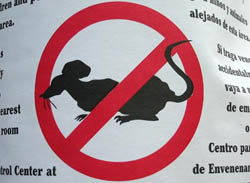
While there are many categories of rodenticides, the most common
poisoning seen in veterinary practice is that of the anti-coagulant
kind. Anti-coagulant rodenticides have ingredient names like warfarin,
fumarin, diphacinone, and bromadiolone. These poisons act by interfering
with a cat's ability to utilize vitamin K. Without vitamin K, a cat's
blood is unable to clot when necessary, which can ultimately cause
severe blood loss, anemia, hemorrhage and death. Generally, clinical
signs are not seen until three to five days after the cat has ingested
the poison. Symptoms resulting from intoxication are weakness,
difficulty breathing, pale mucous membranes, bruising and bleeding from
the nose. Other types of rodenticides can cause neurological signs such
as incoordination and seizures as well as cardiac failure.
If
accidental ingestion of rat poison is suspected, contact your
veterinarian immediately, even if your cat is showing no obvious signs
of being ill. Be sure, if possible, to bring the poison container to the
veterinary hospital in order to determine the specific rodenticide
ingested. Early recognition is critical, as some toxicities can be
treated successfully if caught early and treated appropriately.
10. Fertilizer
Spring and fall are the times to fertilize. Unfortunately, it is also
the time for accidental poisoning. Cats, the perennial groomers, often
lick their paws, especially after walking outdoors. Because fertilizers
are usually a combination of ingredients, several toxic outcomes are
possible. In general, the ingredients are poorly absorbed and most
clinical signs are related to gastrointestinal irritation showing up as
vomiting, hyper-salivation, diarrhea or fatigue. The best way to avoid
illness or injury is to keep your cat inside while treating your lawn
and wait a little bit before letting him or her out again.

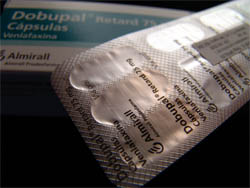
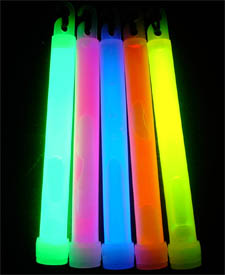

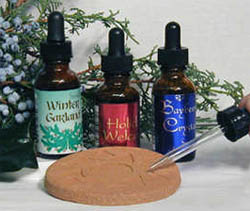
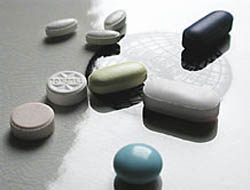



Modern cell-based therapies have progressed from the first recorded human–human blood transfusion by James Blundell through to the advanced cellular therapies of today. This 200 year journey, based initially on clinical trial and error and more recently on laboratory science, has culminated in the necessary critical mass and unique challenges to justify being a distinct industry in its own right. Thus, today cell therapy is the fourth and most recent therapeutic pillar of global healthcareStem Cell Treatments
ReplyDelete